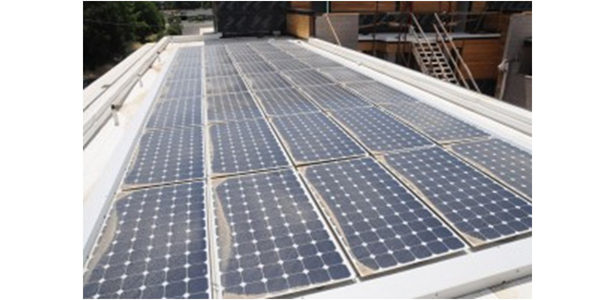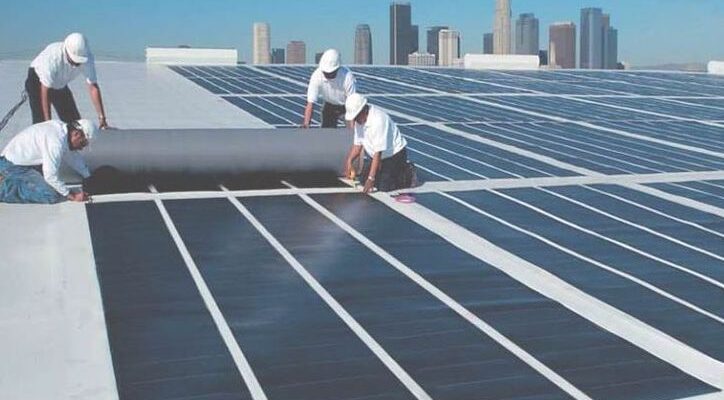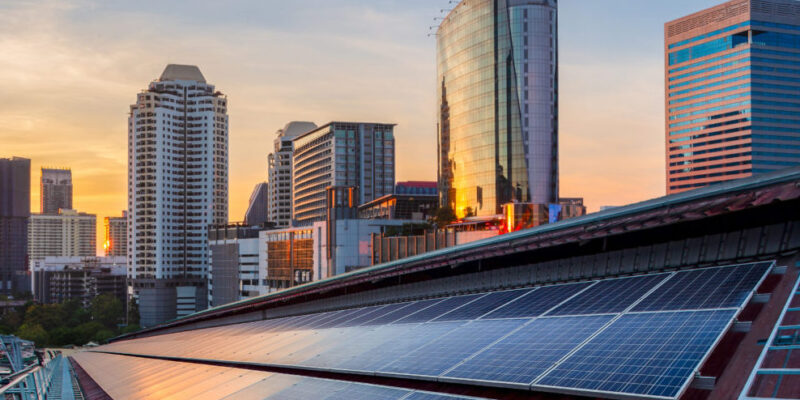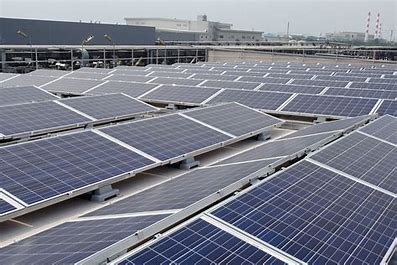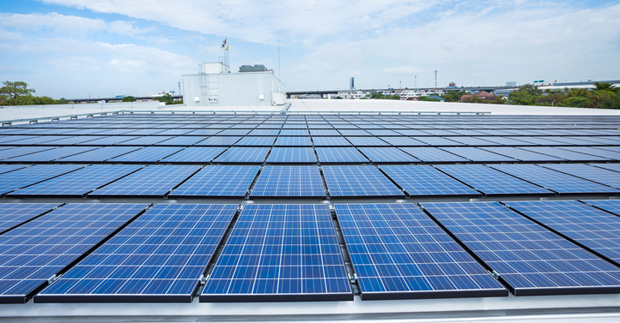In the realm of sustainable energy solutions, solar technology is at the forefront of innovation, transforming the way we power commercial properties. A groundbreaking development in this field is the integration of solar cells into commercial roofing materials, introducing us to the world of solar roofing for commercial structures. This promising advancement not only aligns with environmental goals but also seamlessly combines form and function for businesses.
The Ascendancy of Commercial Solar Roofing
Commercial solar roofing isn’t a futuristic vision; it’s a reality that has been steadily gaining momentum in recent years. While conventional rooftop solar panels have long been a staple for capturing solar energy, solar roofing takes this technology to a higher level. These roofing materials incorporate photovoltaic (PV) cells directly into the roofing system, such as single-ply membranes or metal roofing, offering a streamlined and integrated solution for harnessing solar power.
Advantages of Commercial Solar Roofing
- Aesthetic Harmony: Commercial solar roofing materials are meticulously designed to harmonize with the overall appearance of a commercial building. They seamlessly blend with traditional roofing materials, eliminating the need for cumbersome solar panels, and enhance the visual appeal of your property.
- Integration Prowess: Solar roofing becomes an intrinsic part of the commercial roof structure. This level of integration ensures a sleek and unobtrusive look, reducing the visual impact of solar technology on your business premises.
- Robust Durability: Commercial solar roofing materials are engineered to withstand the harshest weather conditions, from heavy rain and snow to scorching sunlight and gusty winds. Their extended lifespan ensures a sustainable solution for your commercial property for years to come.
- Energy Generation: Solar roofing systems can significantly reduce your business’s energy costs by harnessing sunlight to power your operations. This not only leads to substantial cost savings but also showcases your commitment to sustainability, which can be a marketing advantage.
- Financial Incentives: Many regions provide incentives, tax credits, or rebates for installing commercial solar roofing systems, making them a financially attractive choice that can yield a favorable return on investment.
As the world increasingly focuses on sustainability and renewable energy, commercial solar roofing stands as a beacon of progress in the roofing industry. These innovative materials offer not only environmental benefits but also a smart investment for businesses. If you’re considering a roofing upgrade for your commercial property, exploring the possibilities of commercial solar roofing is a prudent step to make your business more energy-efficient and visually appealing. Stay tuned for ongoing advancements in this transformative technology as commercial solar roofing continues to redefine the landscape of sustainable commercial properties.

